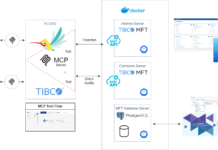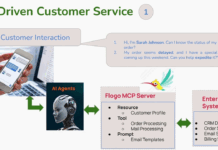
For a long time, application and data integration were considered specialty disciplines best handled centrally by the same IT teams responsible for development, implementation, and application management. In the last few years, however, application ownership has increasingly moved away from those centers of excellence out to line of business (LOB) managers. As a result, many of those managers are also looking to do integration for themselves and not always with the best results—either for departments concerned or, more importantly, the organization as a whole.
Integration Shouldn’t Reduce Visibility
LOB managers look to do the best they can. But, unfortunately, without strict guidance and oversight, integration can all too easily lead to a proliferation of solutions, and a reduction in overall visibility, governance, and control.
Add to that the growing availability of cloud-based iPaaS (integration platform as a service) solutions, and companies find themselves saddled with multiple “just good enough” products—products that meet immediate individual requirements but fail to address the wider need for integration across a growing number of platforms.
The potential scale of this problem is huge and should not be underestimated. Gartner, for example, believes that by 2017 at least 65 percent of integration will be delivered outside the remit of central IT. One solution would be for CIOs to clamp down and insist on centralized integration in all cases, but that would inevitably stifle innovation and reduce business agility. A better approach is to agree on an adaptive and layered method, with business units and central IT working together to deliver integration solutions.
Making Line of Business Integration Work Across the Wider Organization
Gartner believes the best way of doing this is for central IT departments to retain responsibility for integration across systems with a slow rate of change, while LOB managers look after fast evolving systems of innovation. To avoid the proliferation of “just good enough” solutions, however, the IT department should still be responsible for the nuts and bolts tooling of the required integration services. These services can then be made available to LOB units on a self-service basis, to provide the kind of adaptive integration needed to cope with rapid developments at the sharp end of the business.
This type of approach allows companies to be nimble, no matter how large they are. More than that, we think it is important for customers to understand that although LOB cloud, mobile, and other applications have unique integration requirements, these should not be addressed using tools from multiple vendors. Instead, it’s far better to choose one platform with best-of-breed integration tools can that can leverage API management technology to bridge the potential divide between new and evolving applications, and those on traditional platforms.
To avoid loss of visibility and control from a growing number of LOB applications, Gartner recommends a layered approach to integration. A robust integration platform can fully meet requirements and deliver adaptive integration across multiple applications, whether centrally managed or under LOB control.





